|
Welcome to Free Translation Sessions with JAC (The Justice Arts Coalition) on the following Thursdays, June 11th, 18th, 25th, and July 2nd on ZOOM from 12:00 - 1:30 pm EST (9am California, 6pm Brussels, 7pm Helsinki)
On June 11th we will make a translation of a work by Оксана Крутицкая (Oksana Krytickaya). On June 18th we will have an open discussion about your translations with Оксана Крутицкая (Oksana Krytickaya). On June 25th we will make a translation of a work from an artist who has exhibited with Free Translation. TBA. On July 2nd we will have an open discussion about your translations with the artist of translated works on June 25th. Free Translation is a multi-disciplinary project showcasing international works by currently and formerly incarcerated people, and anyone affected by imprisonment. In these sessions we use translation techniques as a means of creatively interpreting works of art and word. This means that we interpret the meaning of the works and create new works of art based on the translations. This can be a translation into another language or another medium. For example, a poem can be manifested into a photograph and a drawing can be written as a letter. In this way, we make new works of art and literature, and attempt to understand each other and open up dialogue. During the 90 minute open art making session we will create translations of the works by Оксана Крутицкая (Oksana Krytickaya) and another Free Translation artist to be announced later. In the following sessions we will then speak with the artist and review the translations of their work. With your consent, artworks will be added to the Free Translation exhibition for the general public to see and continue the dialogue. PURCHASE TICKETS FOR THIS WORKSHOP SEQUENCE, AS WELL AS JAC'S OTHER CREATE + CONNECT EVENTS, AT THIS LINK: https://bit.ly/3cAW8iV https://freetranslation.prisonspace.org About the facilitators: Anastasia Artemeva is a visual and socially-engaged artist and researcher. Anastasia was born in Moscow, Russia, and lived in Ireland for many years before moving to Helsinki. Her socially-engaged creative projects explore and create space for communication and interaction. Conceptually, its activities are based on codes of social norms and accepted truths, which are influenced by socio-political, cultural and personal limitations and boundaries. Anastasia works in the genre of drawing, art installation, performance, creates artwork for theatrical productions and conducts art workshops. Arlene Tucker is an artist and educator, and her work focuses on adding play elements to daily life through her art. Inspired by translation studies and animals she finds ways to connect and make meaning in our shared environments. Her process-based artistic work creates spaces and situations for exchange, dialogue, and transformations to occur and surprise all players. She is interested in creating projects that open up ideas and that engage the viewer; that invite the viewer to be a part of the narrative or art creation process. In translation, your participation continues to propel the story. Free Translation Sessions is a collaboration of two projects both based in Helsinki: Prison Outside and Translation is Dialogue (TID). Prison Outside is an independent project founded in 2015. The research behind this project is centered on the subjects of imprisonment, justice, and the role of the arts in the relationships between people in prisons and people outside. TID is an art installation that generates a new project every time it is presented. TID uses translation techniques to not only produce art, but also understand what is being communicated. https://prisonspace.org https://www.translationisdialogue.org A conversation between Carole Alden and Arlene Tucker was published in Le Journal de Culture & Démocratie in April 2020. Hélène Hiessler translated the article into French from English. Read the publication in French here. Below is the English version. To learn more about Culture & Démocratie, please click here. Free Translation is a multi-disciplinary exhibition showcasing international works generated from an open call to incarcerated people, ex-convicts, and anyone affected by imprisonment. Through this platform, artist and Free Translation co-developer Arlene Tucker met artist, Carole Alden. Through art practice, mail exchange and dialogue ideas, preconceptions, expectations, false realities, and forms of expressions are explored. From the exhibition, Free Translation Sessions were born. In these gatherings we make art, interpretations, and view and discuss artworks received. The sharing of personal stories, experimenting with art techniques, and listening to subjective views can help guide one’s artistic process and shed light on different walks of life. __ Arlene Tucker (AT): The work you contributed to the Free Translation exhibition has been an inspiration for more artworks and the dialogue that has been raised through your pieces has been very powerful. Did you ever think that your work would be a source of translation? Carole Alden (CA): When you create in isolation, you have no concept of your work impacting others. For me it began as a vehicle to turn overwhelming mental and emotional anguish into something survivable. My hope being an evolution from feeling helpless, to a productive plan for my life. In or out of prison, I wanted my life experiences to count for something. I had no idea that a project like Free Translation existed. Where I live, incarcerated persons are essentially shunned. You feel completely disenfranchised from society. There is no real dialogue between incarcerated and free people. Prior to my involvement with Free Translation, l had never seen any effort from free people to understand the experience of being in prison or what might happen in a person’s life to precipitate time spent in prison. You were ostracized and ignored. Made to feel as though you were bankrupt of all that made you human. AT: It was through Wendy Jason at Prison Arts Coalition (now The Justice Arts Coalition) that led us to you and your work. In the end, you made the effort to stay in touch, to share with me. Dialogue is not solitary. CA: Believe me, I am grateful to be found! My mother had found The Justice Arts Coalition and urged me to contact them. I was extremely hesitant after being defrauded by multiple entities claiming to assist incarcerated artists. It was a year of corresponding with Wendy before I decided to take the plunge and trust someone with my artwork again. I was thrilled to find an organization that was true to their word and not in the business of exploiting prison artists. Because of the groundwork of trust she laid, I felt very comfortable in sharing my images with Free Translation when she suggested it. AT: What was this drawing of the Woman Impaled about for you? CA: The first version I had drawn while still in the original jail, awaiting adjudication of my charges. That was towards the end of 2006. I had no access to competent legal representation and no one to advocate on my behalf. I literally felt the system was a continuation of the abuse and death my spouse had planned for me. I felt emotionally and physically stripped of anything that allows a person to feel human. My hopes and dreams were disappearing beyond the horizon. I felt my life draining away and nothing but immobilization and overwhelming anguish and pain. I wanted to die. I felt that if my spirit were no longer tied to a physical body, then it could leave this place to go be with my children. AT: How long were you incarcerated for? CA: I did 13 years out of a 1-15 indeterminate sentence. AT: How did people interact with each other? Was there anybody that you felt you could confide in? CA: The women's prison in Utah had a very different social dynamic than the men’s when it came to certain things. Long term inmates tended to recreate designations that approximated family relationships. Roles were adopted as mothers, fathers, and children. It was not unusual to hear young women speak of having a biological mother, a street mother, and a prison mom. A larger context had to do with commerce, which encompassed drugs, commissary items, and services. In all the time I was down, I kept myself separate from most of what constituted prison culture. I watched, paid attention, and discerned that being enmeshed in the social standards and practices were the primary source of conflict both with each other and the officers. I was determined to remain focused on what I could create in order to be better equipped for the future on the outside. There was really only one other inmate I got close enough to share my hopes and dreams with. She is also an artist and still inside. We were only housed in the same general vicinity for a couple years yet we remain close and invested in each other’s success. AT: What about solidarity or some sort of togetherness within the prisons? Did you feel like you could come together with others or was it very solitary? How were people separated? CA: We saw considerable solidarity on the men’s side. They would organize strikes and protest to get policies changed. This did not happen on the women’s. Too many feared retaliation, or would inadvertently undermine their peers by trying to use relationships with certain guards to change just their own circumstances. Some of it had to do with the feeling that we had more to lose than the men. Tenuous contact with our families was a big deterrent to standing up for yourself. AT: What do you think about the translations, the artworks responding to your original artwork, Woman Impaled? Can you perceive how your painting was translated or interpreted based on their piece of art? CA: Honestly, I was shocked at how perceptive the participants were. They expressed a depth of understanding and empathy I was totally unprepared for. It had the effect of removing my sense of isolation. For the first time in 13 years I felt a restored hope that there was still a place in the world for me. Prior to this, my anxiety surrounding the eventuality of release was debilitating. AT: When you don’t know, you’re in limbo and that can be a hard place to be. Would you like to share on what grounds you were convicted? CA: That limbo of not knowing for sure is probably the most psychologically damaging part of indeterminate sentencing. It robs a person of the ability to create a realistic plan for their future. Everything feels imaginary and moot until you finally have your release date, no matter how close or far off it might be. I had an indeterminate sentence of I to 15 years for second degree manslaughter. My matrix was 5 years. In other words, the suggested time to be served in consideration of mitigating circumstances. I waited 4 years to hear when my date to see the board would be. At a little over 5 years I saw the board. The board chose to ignore the reports of domestic violence and evidence of self defense. I had shot the man as I was cornered in a small laundry room. At that moment. I had no other option that preserved my own life or my children’s. AT: How did you manage to keep making art while incarcerated? CA: Deprivation is the mother of creativity. I continuously scanned my environment for materials to repurpose in order to expand the possibilities of what I could create. Not getting caught was often a large part of the creative equation. Balancing that drive to create with the institutional directive to remain idle was an ongoing conflict. I did my best to fly under the radar and not attract attention. It was an ongoing occurrence for the SWAT team to come through and throw away any artwork, even if you had written permission to construct it. I began with drawing as it seemed to be tolerated more than other forms of expression. During the winter I would utilize the snow as a sculpting medium. At my four year mark, the urge to sculpt overwhelmed my aversion to crochet. I taught myself one basic stitch and began to experiment with yarn as a sculpting medium. As I became more proficient, my efforts evolved from largely meditative to a challenge to keep my thought process sharp. At 8 years down I was transferred to a county facility. With only 70 inmates at a time, the officers took a greater interest in what people did to be productive. They turned out to be far more supportive than any facility I had been in. The last five years have brought multiple opportunities to communicate and exhibit my work. At the beginning of my incarceration I was told by the caseworker that I would never be transferred to a county facility due to my charges and my medical condition. When I was transferred, the receiving caseworker remarked that it was strange as I did not fit the criteria to be housed in a county jail. Aside from medical issues, I still had seven years remaining. County jails are not designed to keep someone for more than a year. Beyond a year, a person’s mental and physical health experiences marked decline. Whatever Utah prisons are lacking, their jails have a fraction of that. You have no access to a yard, usually no contact visits, no education beyond high school, no exercise equipment, or much in the way of jobs, religious options or a library. You basically eat and sleep. Not a place for long term inmates. AT: How was it that you were able to be transferred? Do you feel that because it was a smaller facility, the environment was less volatile? Or does it have anything to do with how those officers were being trained and supervised? CA: Originally I was transferred as a means to disrupt my access to an attorney who had expressed interest in reopening my case. Essentially they moved me in a manner that took away my ability to be in touch with my attorney and separated me from my legal files. Someone did not want my case to be scrutinized and took action to make it impossible for me to continue my appeal at that time. I was separated from all my legal paperwork, contact information, pictures of my children and all my artwork, supplies and personal belongings. Normally they tell you you’re being, “counted out” and you would be permitted time to pack whatever you’re allowed to take, and make arrangements for your family to collect the rest. They sent me to the opposite end of the state and allowed my things to be pilfered by inmates and officers alike. I lost a portfolio of work worth about $75,000.00 that I had hoped to start over with upon release. After reiterating my desire to self harm, they transferred me again to the county jail where I remained for the last 5 1/2 years. I do believe the quality of life in that facility was due largely to the staff and how they chose to treat people. They seemed to be allowed more agency in their personal interpretation of their role as guards. Consequently we had individuals who treated us like human beings and encouraged positive endeavors. This is very rare in Utah Corrections. I am very grateful for the opportunity and encouragement I received in creating my work. AT: How are you feeling since your release? What kind of challenges have you been faced with? In the time you have been free, what have you already adjusted to? CA: Being released, unexpectedly, several years early was a mixed blessing. My over the top elation was tempered by my abject terror over all the things I had no time to prepare for. Would I flinch if a grandchild rushed in for a hug? Would I freeze and bolt if I felt overwhelmed at a Walmart? How on earth would I support myself at the age of 59 with absolutely nothing? The thought of trying to understand fractions of words in texting had me in tears. Thankfully, becoming connected with people in this community has gone a long way in helping me forgive myself for the learning curve I’m tackling. I have had a lot of support in rediscovering that I can still learn whatever I need to and become whoever I choose to be. AT: We cannot do this alone. Amazing that you could emotionally prepare yourself for your release and apply all of that insight into your current situation. When I read your letter about your release that you sent in May, you had talked about this and I was so impressed with your level of emotional awareness. Who were your go to people, your support system? How can we most efficiently and effectively process our emotions? We all are different, but I think sharing tips is one way to show support. At least it is for me! CA: Any release is daunting, but after over a decade, there’s really no way to adequately prepare yourself. Too many intangibles that bombard you at any given time with no warning. I had a couple close friends who had done time over twenty years ago. They were the ones to peel me off the ceiling and encourage me to believe I could do this. I think patience and encouragement are the biggest things. People want to help and tend to be quick to offer up solutions. At that fresh out stage, even having a bunch of problem solving solutions dropped in your lap can leave you feeling overwhelmed and paralyzed with indecision. Be loving and open. Give us the space we need to figure out what we need help with. AT: Now that you are free, what does confinement or imprisonment mean to you? How does that definition differ from prior to your incarceration? CA: Honestly, for most of my life prior to incarceration, I gave it absolutely no thought at all. It had not touched my life through family or friends. It was as disconnected to my reality as if someone said there was a planet of unicorns I could visit one day. About 7 years prior to my incarceration I had a friend go to prison for 11 months on a possession charge. That acquainted me with the gut gnawing fear that family members suffer nonstop during their loved one’s imprisonment. Knowing that they are rarely safe, and without adequate medical care, food or housing. Feeling their spirit and engagement in life wither as days, months, and years pass. In some ways, your family suffers even more. Yet support for your families is scant as well. Social judgment and humiliation is the norm. Being denied the basic dignity of liberty, even if you happen to be somewhere decent, will never be acceptable in my heart. I will never look at a zoo the same way or keeping pets. It hurts to see any living thing denied the choice to live the way they were meant to. ++ Free Translation’s open call for artworks is ongoing and open to all. This exhibition makes use of the translation process as we interact and create new artworks in the gallery space and online. Your works on view will encourage the audience to prompt dialogue, inspire thoughts, and creatively activate the space. Your voice is heard and recognized. Your artistic contribution is very much appreciated. Works can be emailed to [email protected] or mailed to: Free Translation ℅ Pixelache Kaasutehtaankatu 1 00580 Helsinki Finland On the online gallery, under each picture, there is the possibility for you to interpret or comment on that piece. It can be in text, visual, or video format. Your translations and interpretations inspires more thoughts, feelings, and perspectives to be shared and to be sparked. https://freetranslation.prisonspace.org Above are artworks made from a Free Translation workshop with high schoolers from The English School in Helsinki, Finland. These students chose to translate Alden's piece. Prison Outside is centred on the subjects of imprisonment, justice, and the role of the arts in the relationships between people in prisons and people outside. We are interested in perceptions of incarcerated people and ex-convicts in the society, and how we can break the stereotypes and support each other. We focus on artistic practices, be it prisoners’ own initiatives or designed educational projects that promote self-expression, solidarity and communication between people of all walks of life. We also offer a platform for production of artistic projects related to imprisonment, currently with a focus on Finland and Russia.
To keep up to date on Free Translation opportunities, please check www.prisonspace.org. About the authors: Carole Alden was born 1960 in Orleans, France to American parents. Grew up primarily in northern ldaho and Colorado. Dad was a forestry professor and mother a librarian. Nature and self education were the things I was exposed to the most as a child. They continue to guide the majority of my work. I married young and had five children from two marriages that spanned twenty years. I have no formal education nor art training beyond high school. Drawing was something I took up in prison. Prior to that I was a fiber artist with pieces in multiple museum collections. I taught myself to crochet while incarcerated and continue to create a variety of sculptures and wall hangings for venues ranging from political to natural. Arlene Tucker is an artist and educator. Inspired by translation studies, animals and nature, she finds ways to connect and make meaning in our shared environments. Her process-based artistic work creates spaces and situations for exchange, dialogue, and transformations to occur and surprise all players. She is interested in creating projects that open up ideas and that engage the viewer; that invite the viewer to be a part of the narrative or art creation process. In translation, your participation continues to propel the story. Her chapter, Translation is Dialogue: Language in Transit was published in Translating across Sensory and Linguistic Borders: Intersemiotic Journeys between Media (Editors: Campbell, Madeleine, Vidal, Ricarda, 2019). Tucker developed Free Translation with Anastasia Artemeva. Tucker has been collaborating with Prison Outside since 2017 and is author of Translation is Dialogue (2010). www.translationisdialogue.org Welcome to Arlene and Vishnu’s NVC lab at Pixelache!
Meetings are held on Wednesday, 22.1 and on the following Tuesdays; 25.2, 17.3, 7.4, and 28.4 from 17:00-20:00 at the Pixelache office: Kaasutehtaankatu 1/21 (Suvilahti, Building 7) 00540 Helsinki. Our group is open to all who would like to learn how to clearly communicate and be better listeners. As a group, we would like to investigate how we can get a grasp of our own emotions and how to be aware of our projections and attract what we want to say. We will use NVC developed by Marshall Rosenberg's as our main source. His theory will help guide us on how to find ways to check our blindspots. In these sessions we will practise how to express ourselves honestly. We would like to focus on identifying our needs and then carry them out. We will listen, be heard and confirm that we have been understood in the way we have intended and likewise wise understand what has been communicated. As performance and visual arts are our main artistic voice, we will use these methods and techniques as a means to put theory to practise. Depending on the group’s dynamics, we are open to all forms of expression. “NVC is about connecting with ourselves and others from the heart. It’s about seeing the humanity in all of us. It’s about recognizing our commonalities and differences and finding ways to make life wonderful for all of us.” https://www.cnvc.org Participation is free of charge. Register by emailing Vishnu & Arlene at pythogorianne(at)gmail.com and arlene.dearyou(at)gmail.com. Very excited to announce that our article, Process as the medium for socially engaged art, has been published in IMAG#7! Big thanks to InSEA and the editorial team- Ângela Saldanha, Bernadette Thomas and Teresa Torres de Eça.
"IMAG number 7 presents a collage of different essays created by InSEA members. When we initiated this issue we wanted to make visible the diverse range of art education practices in formal and non-formal settings and to invite the readers to engage in a visual journey; a process of ‘encountering others’. There is no filter on what should or should not constitute art education. Rather, here we have a mosaic of approaches; of ways of making and ways of understanding the role of art education in the schools, museums; universities and communities. We travel according to the last InSEA roads through the encounters generated during InSEA seminars and congresses. The journal opens with a story told by Steve Willis, current Vice President of InSEA, where he shares impressions, feelings and thoughts about his experience during the InSEA seminar in Walvis Bay, Namibia (Encounters with Otherness to achieve Knowingness). As our journey continues, the reader meets Korinna KorsströmMaggatröm-Magga (North Calling); Anastasia Artemeva and Arlene Tucker (Process as the medium for socially engaged art); Phivi Antoniou (Cyprus) and Dina Adel Hassan (Egypt). The northern authors reveal community art practices and social engaged intercultural projects in Finland and Russia. In the same section a different encounter invites the reader to learn about other socially engaged art education experiments in Alexandria, Egypt, with Dina Adel Hassan who describes using images, an experience conducted with Children at Risk in Egypt." Download The full ISSUE ( PDF 17,9 MB) or individual chapters. Otherness as a Form of Knowingness Steve Willis DOI: 10.24981/2414-3332-7.2019-2 Process as the medium for socially engaged art Anastasia Artemeva and Arlene Tucker DOI: 10.24981/2414-3332-7.2019-3 North Calling Korinna Korsström-Maggatröm-Magga DOI: 10.24981/2414-3332-7.2019-4 Field Experiments in Visual Arts: Children at Risk, Homeless Children Dina Adel Hassan DOI:10.24981/2414-3332-7.2019-5 People, Stories and Histories of Strovolos III – Public art, social engagement and situational practices Phivi Antoniou DOI: 10.24981/2414-3332-7.2019-6 The past in the present Ismini Sakellariadi DOI: 10.24981/2414-3332-7.2019-7 Educating through design | Eduquer par le design: Naissance d’un club de design Azza Maaoui DOI: 10.24981/2414-3332-7.2019-8 Maktab Gammarth Toursom Myriam Errais Borges DOI:10.24981/2414-3332-7.2019-9 Elisavet Konstantinidou & Eva Pavlidou DOI: 10.24981/2414-3332-7.2019-10 Exploring artistic and cultural identity through an art curriculum unit Fotini Larkou DOI: 10.24981/2414-3332-7.2019-11 Pensar, espacio, piel. Un ensayo visual desde nuestra experiencia como a/r/tógrafas. | To think, space, skin.A visual essay from our experience as a/r/tographers. María Martínez Morales; María Isabel Moreno Montoro and Nuria López Pérez DOI: 10.24981/2414-3332-7.2019-12 “Art Lab x Kids: art as an instrument for discovery and knowledge”: a visual literacy Project Katia Pangrazi DOI: 10.24981/2414-3332-7.2019-13  Welcome to the 16th ETMU Conference 2019 on SOLIDARITY, PARTICIPATION, AND POLITICS! November 14-15, 2019 Tampere University, Tampere, Finland Anastasia Artemeva and Arlene Tucker will be presenting Free Translation Sessions on Thursday, November 14th. We are grateful and excited for this experience. The conference addresses different meanings and concrete practices of solidarity, participation, and politics and their effects in the context of global mobility and ethnic relations. Today, the overall question of migration has become extremely politicized and views concerning it are polarized. In particular, populism and far-right activism manipulate the issue to promote ethno-nationalist agendas across the globe. These developments have fed into policies that rely on violence at the borders, abjection of people on the move and the negligence of their human rights. Predominant responses among states across the European Union and more globally rely on enhanced surveillance of borders, tightened criteria for entry and stay as well as hierarchical categorizations of those living inside Europe. At the same time, there are calls for policies that would support the development of more inclusive societies, respect for human rights and solidarity. Inclusive participation and solidarity are indeed described as ways to enhance equality among diversely positioned people or as antidotes to the crisis of democracy. Hence, questions of global mobility and ethnic relations touch societies profoundly at multiple levels and in diverse ways ranging from mundane relations and encounters to the principle of rule of law and social justice. Confirmed keynote speakers are Dr. Prem Kumar Rajaram (Central European University, Vienna, Austria), Dr. Elisa Pascucci (University of Helsinki, Finland), and Dr. Nira Yuval-Davis (University of East London, UK). For more information and to register for the conference please click here: https://events.tuni.fi/etmu2019 BIG thanks to Culture for All Service and Globe Art Point through the Avaus-project for supporting Free Translation Session. During my art residency at Universidad Nacional de Colombia I had the honour to hold a few seminars with art professor Ana Maria Sanchez Lesmes and her art and education students. A couple of the seminars regarded my Dear You art project while the other one focused on exchange and process. I used Translation is Dialogue and my other projects as gateways to show how translation techniques can be a method to open up dialogue, process information, and help articulate one's ideas and make oneself heard. Since Ana has such a diverse group of students coming from fields of art education, architecture, art, and psychology, to name a few, we also discussed the value of interdisciplinary approaches. We started the session with a long table draped with different types of paper- blank and ready to be inked up, drawn on, covered with words transferred from the mind. I suggested that we all put out on the table our drawing tools to share, in hopes of establishing a creative and collective presence. On top of the paper were images from artists that have submitted artworks to Free Translation exhibition. For example, works by Carole Alden, Todd Hollfelder, and the spring class from the Richmond City Justice Center made multimedia art with Virginia Commonwealth University Open Minds program in 2015 were presented. I invited the group to draw whatever comes to their mind as they processed these artworks. I simply said, "Don't think too much. Just do, make, draw, write." As everybody works differently, the pacing at first was slow, but soon after everybody was hovering around the table drawing and painting. Splashes of conversation, here and there, would arise, but for the most part we all were intently focused on drawing and moving around the table to add our interpretations to the different images. After about an hour of conversing artistically and visually, we felt it was time to verbally discuss. Some students felt this experience was therapeutic and calming. Some felt it was difficult at first to know what to draw, but once they found an entry, it became easier and fun. Some felt it was relieving to not only draw with art students- that this mix of backgrounds and disciplines made it more relaxing to just draw and not worry about being judged by other artists. Some enjoyed this as an opportunity to listen to other perspectives and not feel inhibited by contradictory thoughts. Some enjoyed experimenting with new materials. Some felt that this was a release to talk about current events and the political situation between university students and the government. Regardless, the conversation flowed naturally and went deep into corners about what we hope and dream as individuals and as a community. It is important to mention that the day before this seminar, I was scheduled to give a presentation on my work. Last minute, it was canceled due to protests on campus regarding higher education. That day I was on campus working and having meetings. I thought my headache was from jet lag, but no, it was from the fumes put in the air by the police. I was told that the police were spraying "gases lacrimógenos" something like "tear gas" into the air. The invisible can be equally damaging and painful as what is before our eyes. At first, it was hard to gauge the danger or severity of the protests as everybody was respectful of each other's wishes to join the protest or watch from the sidelines. The police, as their robocop uniform suggests, creates a wall to oppose (to oppose what?), to protect (to protect what?) and mostly, from what I felt, to not listen to ideas suggested from other perspectives. Also, it was shocking to me how normalized these situations can quickly become; the sound of bombs, the feeling of the fumes getting into your system, the inconvenience of entrances being blocked due to the protests all became a part of daily life in a matter of minutes. These issues, amongst others, were raised after our collective drawing, yet you can see that they were still fresh in many people's thoughts as they became apparent in the images. Thank you so much UNAL, Ana, and Ana's students for their openness and willingness to want to share, exchange thoughts and to have an open dialogue! I feel that, with those elements in place, anything is possible. XOXO, arlene Sidenote: that morning as I was walking to the University I saw a few robocops drinking coffee and having breakfast on a backstreet outside of campus. I had never seen this kind of uniform and did not assume that they were police as their outfit looked really unpractical. How could they help somebody wearing such an immobile costume? I soon learned their role. It was interesting to talk to people about this and the symbolism behind their suit. Some people said that they wear masks so that it's easier to hurt other people. Another idea was that their machine looking costume desensitizes their human nature, making it easier to act with force on other life forms. Is this true? What do you think? How does your outfit dictate your actions? Do you feel how you look has an affect on how you act? References:
https://colombiareports.com/colombias-teachers-join-students-in-nationwide-protest-police-warns-for-extremists/ https://www.counterpunch.org/2019/10/02/colombia-diary-under-heavy-manners/ https://freetranslation.prisonspace.org/ http://unal.edu.co/ https://www.vice.com/es_co/article/4w9k5q/che-universidad-nacional-santander-tropel-1976-policia We are very excited to be part of No Labels No Walls Festival 2019 on Tuesday, September 24th from 15:30-18:30 at Caisa Culture Center on Kaikukatu 4 B, Helsinki!
Welcome to our September art-making sessions. We will view and discuss artworks received from all over the world in response to the Free Translation open call. These artworks are created by people affected by incarceration. During the three-hour session we will view the works and hear the stories of people who created them, many of whom are currently in prison. We will then create translations - responses to the artworks and upload them on the online exhibition, for the artists and for the general public to see and continue the dialogue. The translations can be visual, written, audible, photographic, or in any other form. You are welcome to bring materials of your choice - or simply bring yourself. This workshop welcomes people of all ages. For more information please contact Anastasia Artemeva and Arlene Tucker at info(at)prisonspace.org You are welcome to contribute to the ongoing interpretations at any time via https://freetranslation.prisonspace.org/ --- Tervetuloa meidän taiteen tekemisen sarjaan. Katsomme ja keskustelemme taiteellisista töistä, jotka ovat saapuneet eri puolilta maailmaa vastauksena vapaiden käännösten (Free Translation) avoimeen kutsuun. Teoksia ovat luoneet ihmiset, joihin on vaikuttanut vankeus. Kaksituntisen tapaamisen aikana tutustumme teoksiin ja kuulemme tarinoita niitä luoneilta ihmisiltä, joista monet ovat tälläkin hetkellä vankilassa. Tämän jälkeen teemme käännöksiä, vastauksia taideteoksille, ja lataamme ne verkkonäyttelyyn, jossa myös taiteilijat ja suurempi yleisö voivat osallistua dialogiin. Käännökset voivat olla visuaalisia, kirjallisia, kuunnelmia, valokuvia tai muita ilmaisumuotoja. Olet tervetullut tuomaan valitsemiasi materiaaleja – tai vain tuomaan itsesi. Työpaja soveltuu kaikenikäisille. 24.9.2014, klo 15.30-18.30 Kulttuurikeskus Caisa Kaikukatu 4 B, 00530 Helsinki Lisätietoa tapahtumasta meihin voit ottaa yhteyttä Anastasia Artemeva ja Arlene Tucker sähköpostilla osoitteeseen info(at)prisonspace.org. https://freetranslation.prisonspace.org/ --- Добро пожаловать на встречу на тему выставки Свободный перевод! Мы будем изучать произведения искусства, полученные из разных стран мира, и созданные людьми, на судьбу которых повлияло ограничение свободы. Эти работы были впервые показаны на выставке в пространстве MAA-tila в Хельсинки в ноябре 2018 года. В течение трехчасовой встречи мы рассмотрим рисунки, услышим стихи, и узнаем личные истории авторов работ, многие из которых в настоящее время находятся в тюрьме. Мы создадим свои собственные творческие работы, интерпретируя, “переводя” услышанное и увиденное, и поместим их на сайт выставки, где их увидят авторы и публика. Мы будем писать письма, рисовать, фотографировать, и использовать другие формы художественного самовыражения. Приносите любимые материалы, или просто приходите. К участию приглашаются взрослые и дети. По всем вопросам обращайтесь к Насте или Арлин по адресу info(at)prisonspace.org. https://freetranslation.prisonspace.org/ 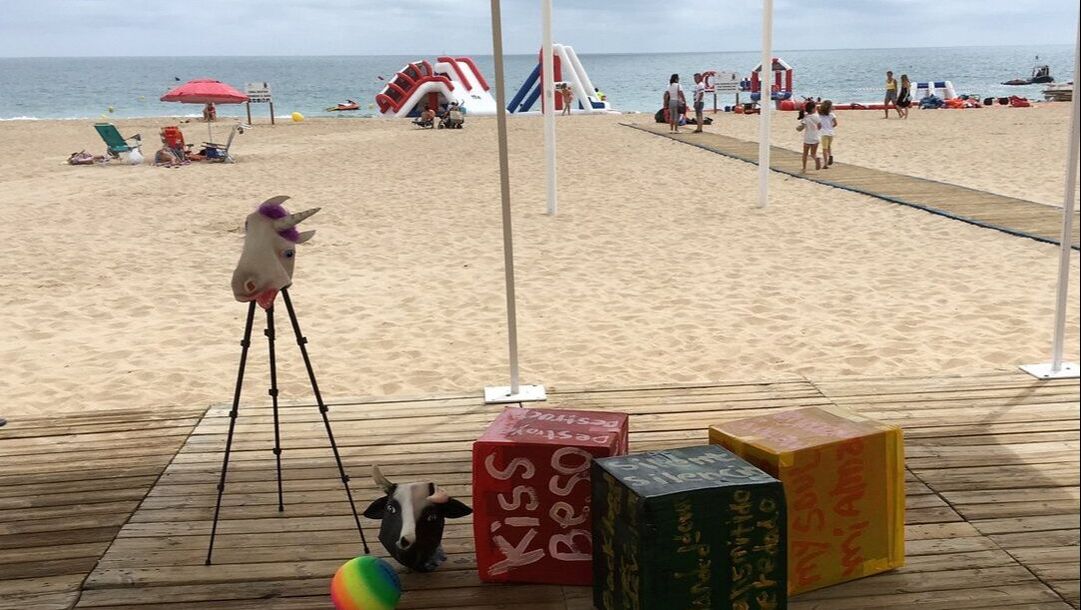 Photo by Hany.P Photo by Hany.P Vapaa käännös #2 8.8-1.9.2019 & Tulkitaan vapaita käännöksiä klo. 12.00-15.00, 25.8.2019 Galleria Bokvillan, Hämeentie 125, Helsinki Vapaa käännös -teoskokonaisuus on kerätty vapaassa haussa vangeilta, ex-vangeilta ja ihmisiltä, joiden elämään vankeus on vaikuttanut. Ensimmäinen Vapaa käännös -näyttely oli esillä MAA-tilassa Helsingissä vuonna 2018 osana Prison outside #2 (Vankila ulkona) -tapahtumaa. Vapaa käännös #2 esittelee Bokvillanissa ja Venäjällä marraskuusta 2018 lähtien Tulkitaan vapaita käännöksiä -työpajoissa tehtyjä teoksia. Tulkitaan vapaita käännöksiä on osa taiteen tekemisen sarjaa, jossa katsomme teoksia ja keskustelemme niistä. Teokset ovat saapuneet eri puolilta maailmaa vastauksena vapaiden käännösten (Free Translation) avoimeen kutsuun. Tapaamisen aikana tutustumme teoksiin ja kuulemme tarinoita taitelijoista, joista monet ovat tälläkin hetkellä vankilassa. Tämän jälkeen teemme käännöksiä, vastauksia taideteoksille, ja lataamme ne verkkonäyttelyyn, jossa myös taiteilijat ja suurempi yleisö voivat osallistua dialogiin. Seuraava tapahtuma on 25.8 klo 12:00-15.00 ja paikalla on korealainen tanssija ja koreografi Hany P. Työpaja soveltuu kaikenikäisille. Lisää tietoa: https://prisonspace.org/Free-Translation-Sessions-August Voi rekisteröityä: https://forms.gle/XqZUYqqRCUWPEZqA6 tai lähettää sähköpostia Arlenelle [email protected].  Veli-Matti Lehikoinen - Prison Gardener, 2019 Veli-Matti Lehikoinen - Prison Gardener, 2019 Free Translation #2 8.8-1.9.19 & Free Translation Session 12.00-15.00, 25.8.2019 Galleria Bokvillan, Hämeentie 125, Helsinki Free Translation is a multi-disciplinary exhibition showcasing international works generated from an open call to incarcerated people, ex-convicts, and anyone affected by imprisonment. Free Translation exhibition premiered at MAA-tila in Helsinki in 2018 as part of Prison Outside #2. Free Translation Exhibition #2 is the subsequent viewing of works made during Free Translation Sessions held in Bokvilla and in Russia since November 2018. Free Translation Sessions are gatherings where we make art, interpretations, and view and discuss artworks received for the international Free Translation exhibition. The sharing of personal stories, experimenting with art techniques, and listening to subjective views will hopefully help guide your artistic process and shed light on different walks of life. August session will be hosted by Hany. P. Her Dancing Dice is a corporeal performance based workshop that allows one to find joy by playing with poetic dice. Hany.P will share with participants how she choreographs a physical language by using the artworks on display at the Free Translation exhibition. Diverse media such as sounds, texts and drawings will give participants space to explore how they interact with each other and how they can create an amalgamated body of language. This workshop welcomes people of all ages who have an interest in interactive creations and, in particular, with physical dialogues. All ages are welcome. Participation is free and therefore pre-registration is encouraged. Email Arlene at [email protected] to register for the workshop and to receive more information. Alternatively, please fill out a form https://forms.gle/XqZUYqqRCUWPEZqA6 Hany.P is the founder of Non Gothic Body Collectives that is a nest for nomadic artists encouraging the artistic solidarity. She holds a Master’s degree in theatre and performance from Goldsmiths University of London. She has worked internationally in a wide spectrum including installation performances, body dialogues with sounds as well as dance films. Her passion is on a creation of independent discourses by suggesting a fresh relation between the body and the instantly changing environment. These experimentations are oriented in a variety of spaces, objects and sounds. Her experiences in the cultural diversity including her recent workshops held in Rota(Spain), Athens(Greece), Essex University. E14 (U.K), Berlin(Germany). Non Gothic Body Collectives, https://www.facebook.com/nongothicbody Free Translation Sessions are organized by Anastasia Artemeva and Arlene Tucker of Prison Outside. Свободный перевод #2
8.8-1.9.2019 & Интерпретируя Свободный перевод 12.00-15.00, 25.8.2019 Galleria Bokvillan, Hämeentie 125, Helsinki Свободный перевод - это международная выставка художественных и литературных работ, которая является частью проекта Тюрьма Снаружи. Экспозиция сформирована из работ, присланных нам по почте от осужденных, бывших заключенных, а также людей, на судьбу которых оказала влияние тюрьма. Первая интерактивная выставка прошла в пространстве MAA-tila в Хельсинки в 2018 году. В настоящий момент проект существует в электронном формате. Мы приглашаем вас на вторую выставку проекта. В ней представлены переводы и интерпретации, созданные в Галерее Боквилла в Хельсинки, а также в России, начиная с ноября 2018 года. В течение трехчасовых встреч Интерпретируя Свободный перевод мы рассматриваем произведения искусства, полученные из разных стран мира, и созданные людьми, на судьбу которых повлияло ограничение свободы. На их основе мы делаем свои собственные, ответные художественные работы. На встрече 25 августа мастер-класс проведет корейская хореограф и танцовщица Хани П. К участию приглашаются взрослые и дети. Участие бесплатное. Чтобы зарегистрироваться, отправьте письмо по адресу [email protected] или перейдите по ссылке https://forms.gle/XqZUYqqRCUWPEZqA6 Дополнительная информация https://prisonspace.org/Free-Translation-Sessions-August https://freetranslation.prisonspace.org/ This text is a re-post of Camila Rosa's message first published on Facebook on December 4, 2018 in response to Free Translation exhibition held at MAA-tila in November 2018. The original version and selected responses from Camila's post, written in Portuguese, are below. Last week I went to an art exhibition in Helsinki, made of works of prisoners from several places @FreeTranslation. Overall, the works dealt with the themes of loneliness, fear, longing, depression, time and death. Obvious consequences of confinement time. It got me thinking about how such an exhibition would be important in Brazil, how I would love to take my students there and have following discussions about crime and punishment. Crime in general, even those kinds of crimes that benefit the students, or those socially accepted crimes, that the white majority of the middle class people easily tolerate. But then, I realized that to discuss these issues it's needed to overcome the colonial reasoning / sadistic instinct that wishes the suffering of prisoners. As if all prisoners were murderers and rapists. As if these crimes made the majority of the prison population. As if the crimes of trafficking, selling drugs should only be punished if they involve black and poor people. "Whitened" crimes (violence against women, tax evasion, money laundering - especially in my former home town, Gramado, for example), seem to be more gentle causing greater empathy. I imagine that in a fictional prison setting for crimes like these, associated with white middle / upper classes, overcrowding, police violence, or rape would render greater opposition from society. All that because people do not understand that to be arrested is to be excluded, to be alone, not to have freedom. And that by itself is punishment, and more, an opportunity to reflect and regret. When are we going to end this sadistic spirit that is only happy in the humiliation and in seeing the blood of those who are already fucked? Thank you, Arlene and Anastasia for the initiative and for facilitating this! Response to Camila's post: Letícia - super important the questions you bring. Why not to plan something with the prison population? Especially in prisons for women. Here (in Germany) there's a theater project that works in juvenile prisons that is incredible. I would love to do such a project in the future. Letícia - The situation of women in detention is fucked. Already begins that most often female prisons receive the same budget as male prisons, and women have other needs that men do not have (menstruation, every person with an uterus needs care in those days, needing to be careful with their pussies to not get sick every two weeks, baby care that can be born while a woman is locked up ...). This is not entirely disregarded in prisons for women in Brazil in general. By saying this I do not mean that male prisons are wonderful, but rather they reproduce the patriarchal structure that is extremely cruel to the woman. That's why I think this work in general is important, especially when it's made with women. --- Camila Rosa is a Helsinki-based researcher, educator and performing artist. She is continuously investigating the approximation between art and critical pedagogies, focusing on the intersection of art and public spheres and institutional contexts. As an investigator, she is mostly dedicated to exploring postcolonial epistemology in the framework of performance art. She has been associating multiple art forms in artistic and pedagogical processes in different Brazilian and Finnish contexts. https://camilrosa.wixsite.com/camilarosa Na semana passada eu fui numa exposição em Helsinki, de arte feita por presidiárixs de vários lugares. @FreeTranslation
Num geral as obras tratavam de solidão, medo, saudade, depressão, tempo e morte. Consequências óbvias do tempo de confinamento. Fiquei pensando em como uma exposição assim seria importante no Brasil, em como eu adoria levar alunxs e discutir sobre crime e punição. Crime no geral, até aquele que traz benefícios pra alunxs, ou aqueles crimes socialmente aceitos pela maioria branca das classe médias. Mas logo me veio na cabeça que pra discutir isso tem que superar aquele raciocínio /instinto colonial de sadismo, e de anseio pelo sofrimento ds detentxs. Como se todos presidiários fossem assassinxs e estupradores. Como se esses crimes fizessem a maioria da população prisional. Como se os crimes de tráfico, venda de drogas só devessem ser punidos se envolver negrs e pobrs. Os crimes "branquizados" (violência contra mulheres, sonegação, lavagem de dinheiro - em especial em Gramado por exemplo-), parecem mais delicados e devem causar maior empatia. Imagino que num cenário fictício de uma prisão pra crimes como esses - associados a classes médias/altas brancas - super lotação, violência policial, estupros sofressem maior oposição da sociedade. Porque as pessoas não entendem que estar preso é estar excluídx, ser sozinhx, não ter liberdade. E isso sem si é castigo, e mais, oportunidade pra refletir e arrepender. Quando vamos matar esse espírito sádico que só é feliz na humilhação e no correr de sangue de quem já tá merda? Resposta ao post da Camila: Letícia - super importante teu questionamento. Pq não planejar algo com a população prisional mesmo? Especialmente nos presídios para mulheres. Aqui tem um projeto de teatro que trabalha em presídios juvenis que é incrível. Eu adoraria fazer um projeto assim no futuro. Letícia - A situação de mulheres em situação de reclusão é muito foda. Já começa que na maioria das vezes presídios femininos recebem o mesmo orçamento que presídios masculinos, sendo que mulheres tem outras necessidades que homens não tem (menstruação e que toda pessoa com útero precisa naqueles dias, cuidado com a ppk pra não ficar doente a cada duas semanas, cuidado com bebe que podem nascer enquanto uma mulher está trancafiada...). Isso não é totalmente desconsiderado em presídios para mulheres no Brasil em geral. Com isso não quero dizer que presídios masculinos são uma maravilha, mas sim que a estrutura patriarcal é extremamente cruel com a mulher. Por isso acho importante esse trabalho em geral, ainda mais com mulheres --- Camila Rosa é pesquisadora, educadora e performer vivendo em Helsinque. Ela continuamente investiga a aproximação entre arte e pedagogias críticas, enfoque na intersecção entre arte e o esferas públicas e seus contextos institucionais. Como pesquisadora, ela explora principalmente epistemologias pós-coloniais nas artes performáticas. Ela tem combinado várias linguagens de arte em processos artísticos e pedagógicos, em diferentes contextos no Brasil e na Finlândia. https://camilrosa.wixsite.com/camilarosa Intersemiotic Journeys: book launch and poetry performance on June 26th from 18:30-20:00
King's College London, River Room, 2nd floor, King's Building, Strand Campus The event is free, but please register here: https://www.eventbrite.co.uk/e/intersemiotic-journeys-book-launch-and-poetry-performance-tickets-62637794329 Madeleine Campbell and Ricarda Vidal will present their book Translating across Sensory and Linguistic Borders: Intersemiotic Journeys between Media, which explores translation as a creative, self-reflective and transformative method. Drawing on first-person narratives from artists and performers, Madeleine and Ricarda will examine how an artefact can be translated from one medium to another, for example from poetry to collage, from music to mediated performance or from video art to experimental narrative. The book seeks to understand the creative processes involved in the individual act of translation, and more generally in the perception and expression of art works. This will be followed by a performance by poet and translator Jen Calleja, who will present her feminist intersemiotic translation of Christian Marclay’s The Clock into poetry, which she composed as part of her contribution to Intersemiotic Journeys. Wine and soft drinks will be available during this event. The introduction and conclusion to Intersemiotic Journeys can be downloaded for free by clicking the link below and selecting 'Front Matter' and 'End Matter' from the table of contents https://link.springer.com/book/10.1007/978-3-319-97244-2 The launch is supported and hosted by the Department of Culture, Media & Creative Industries, King’s College London. |
ContributorsArlene Tucker: author and curator of TID Arch
|
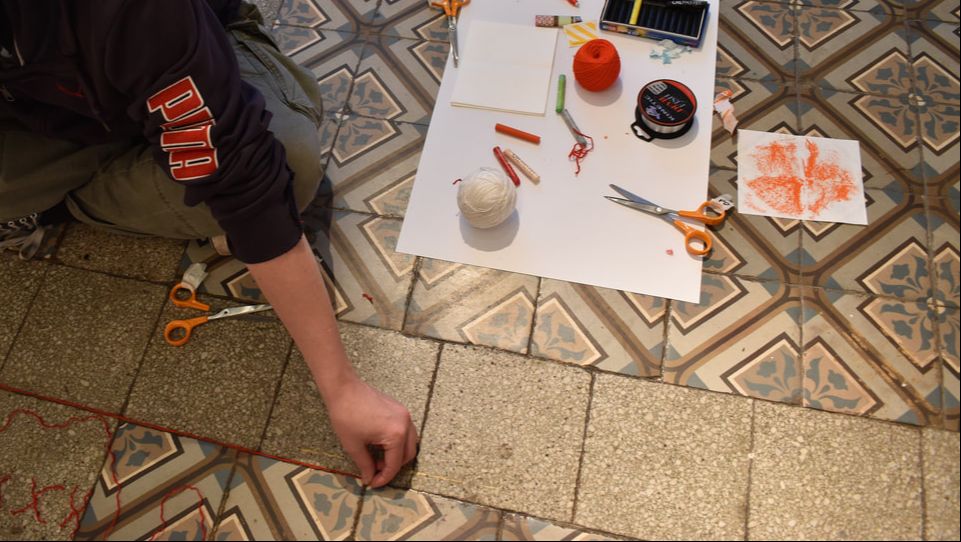
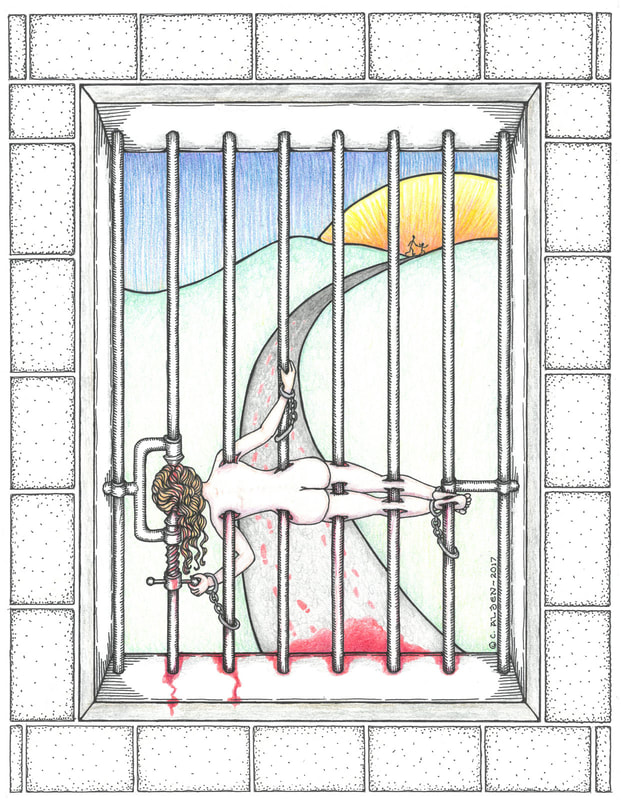


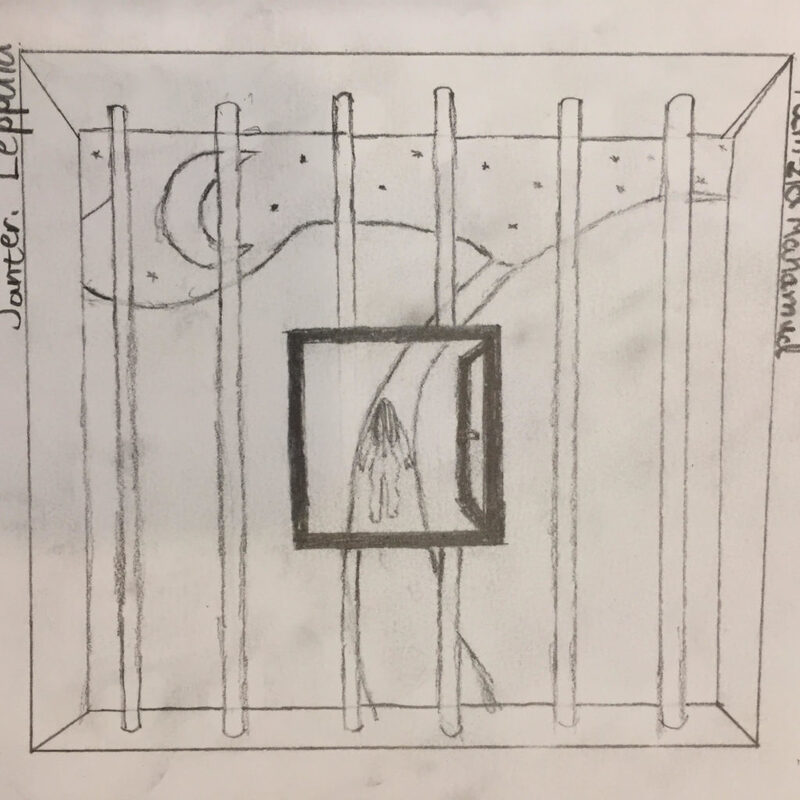
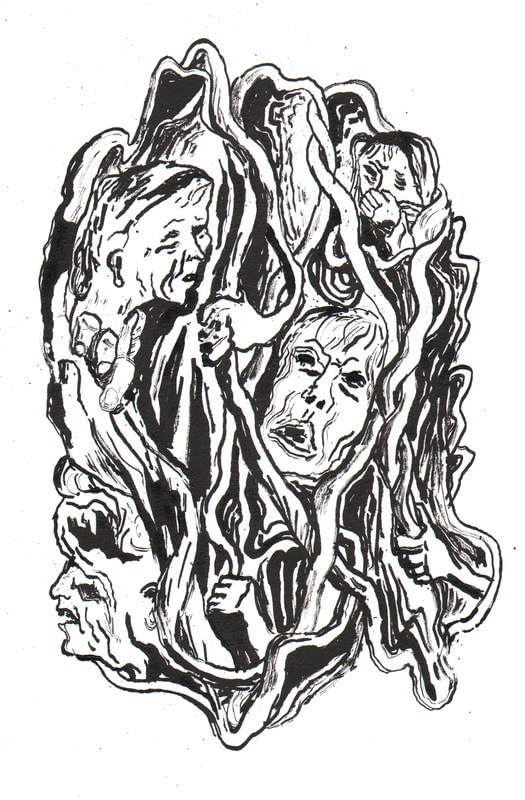
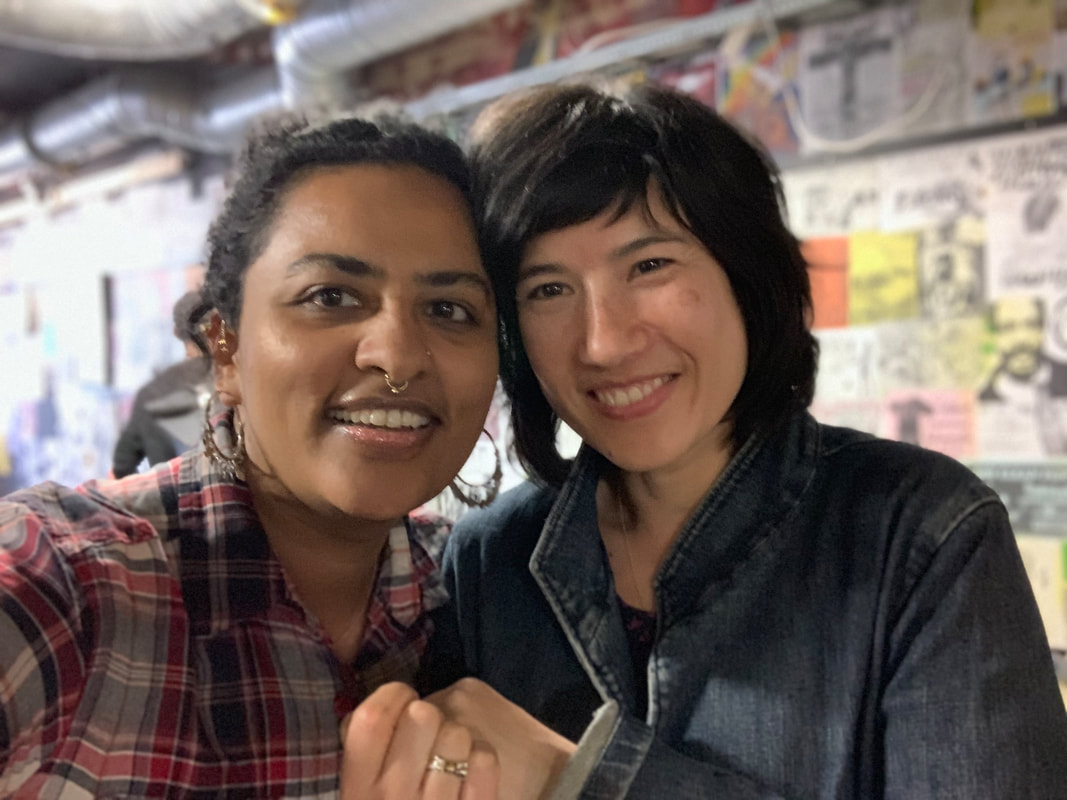
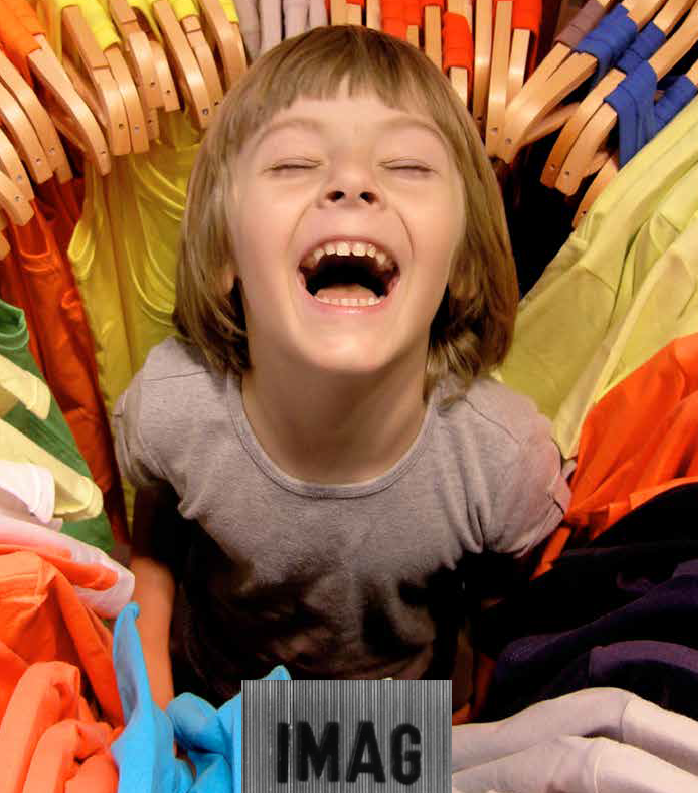
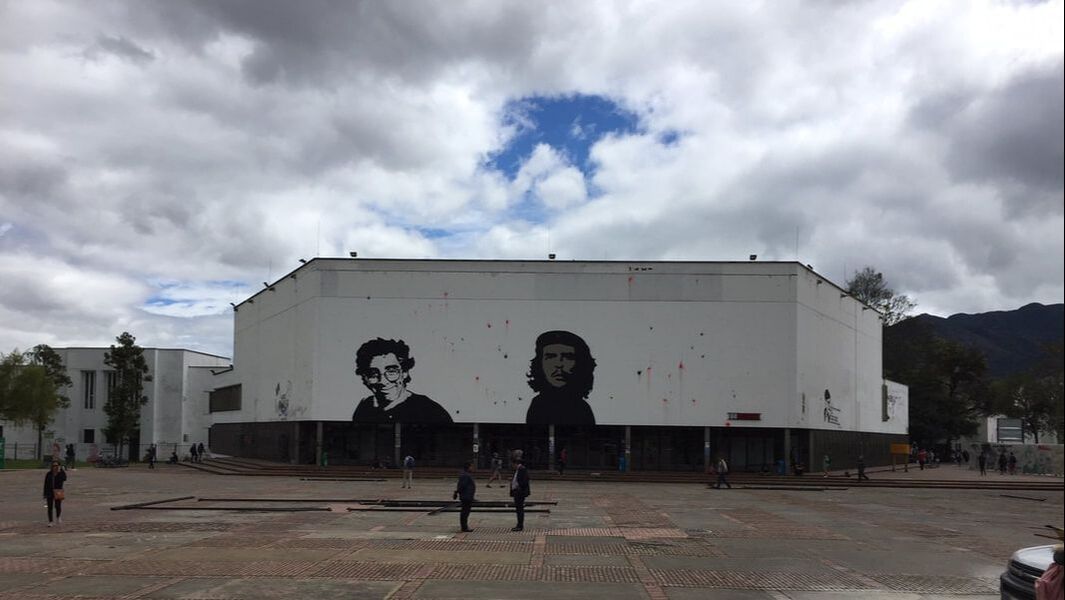
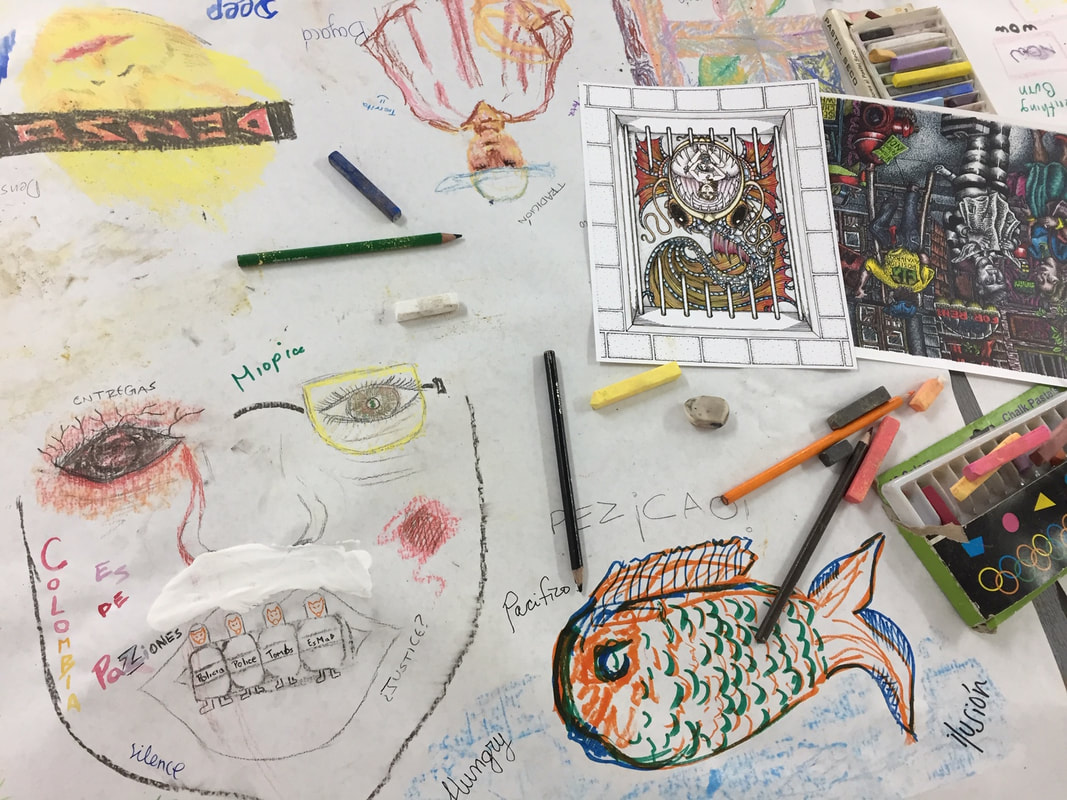
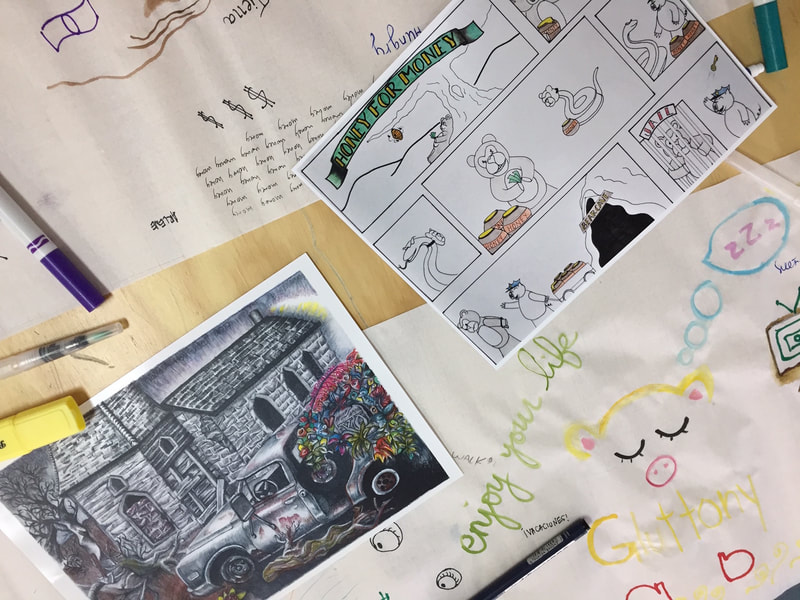
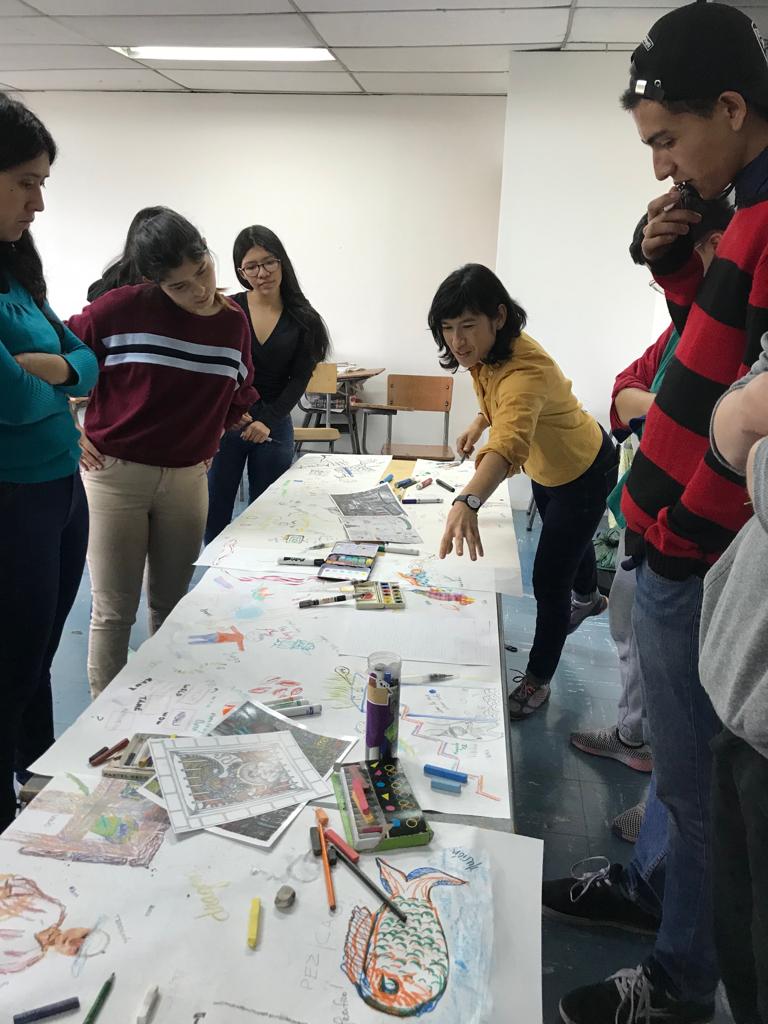
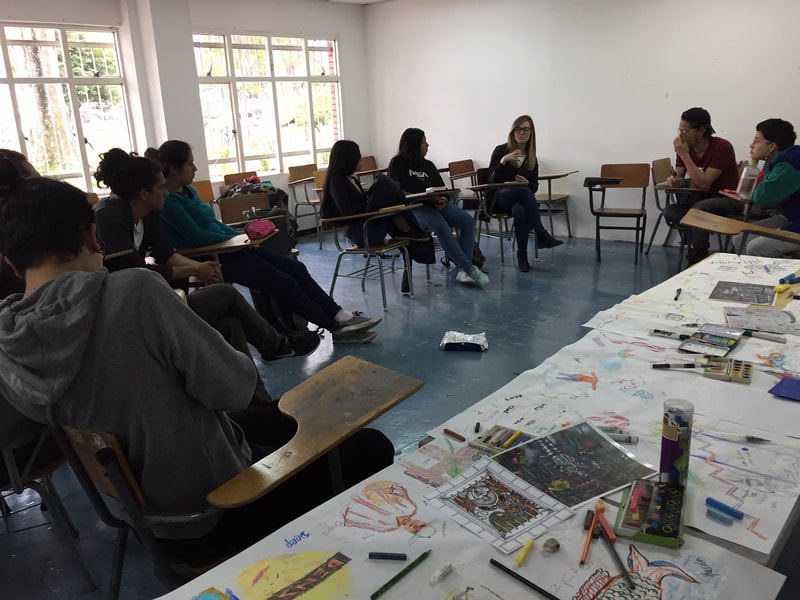
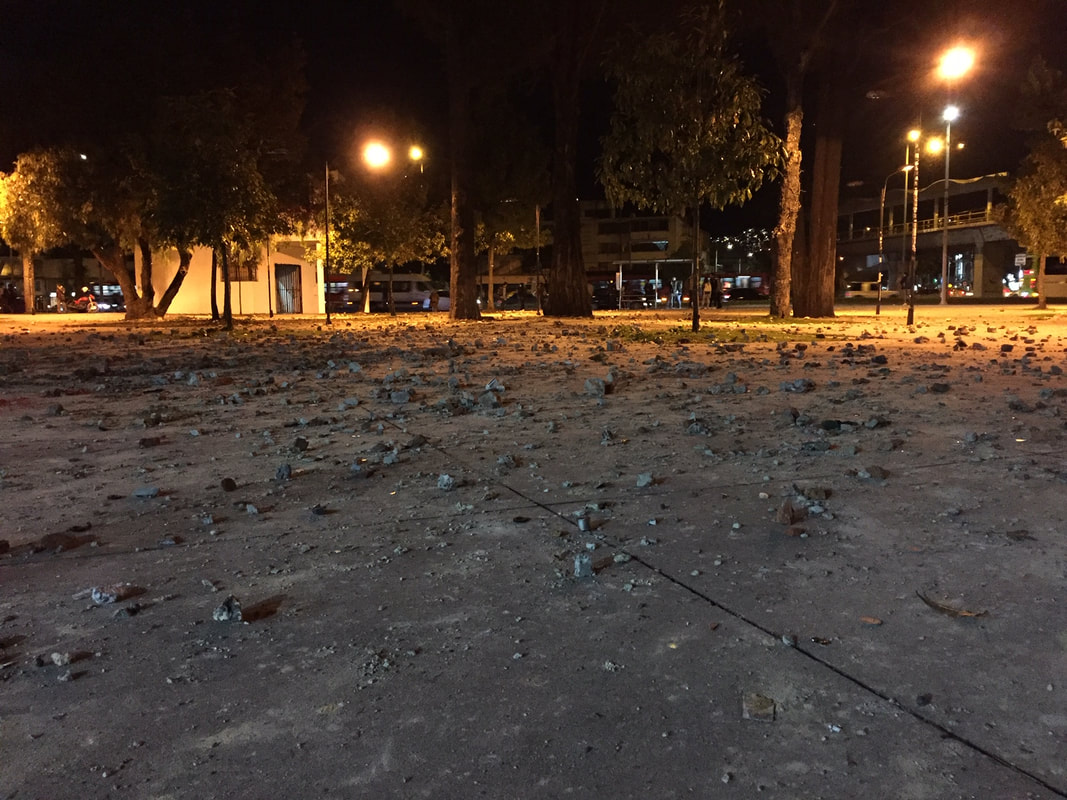
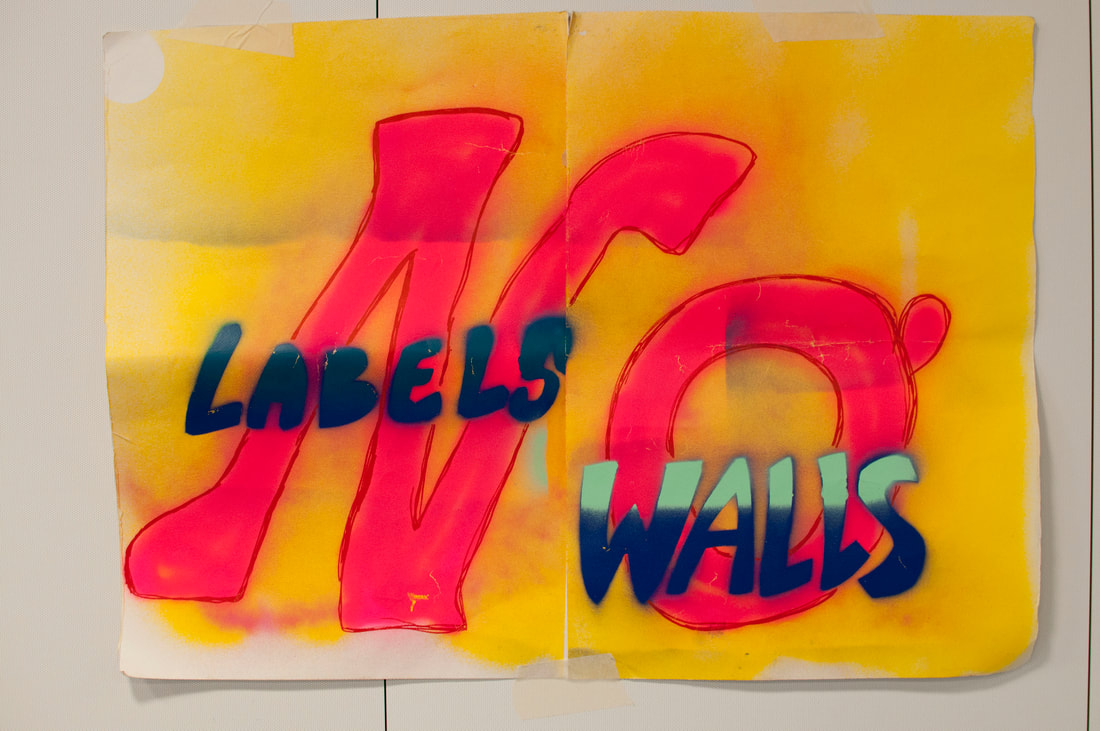
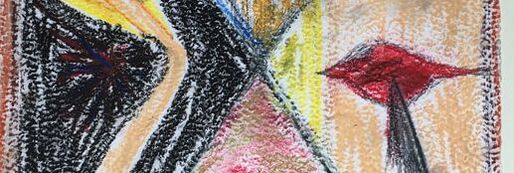
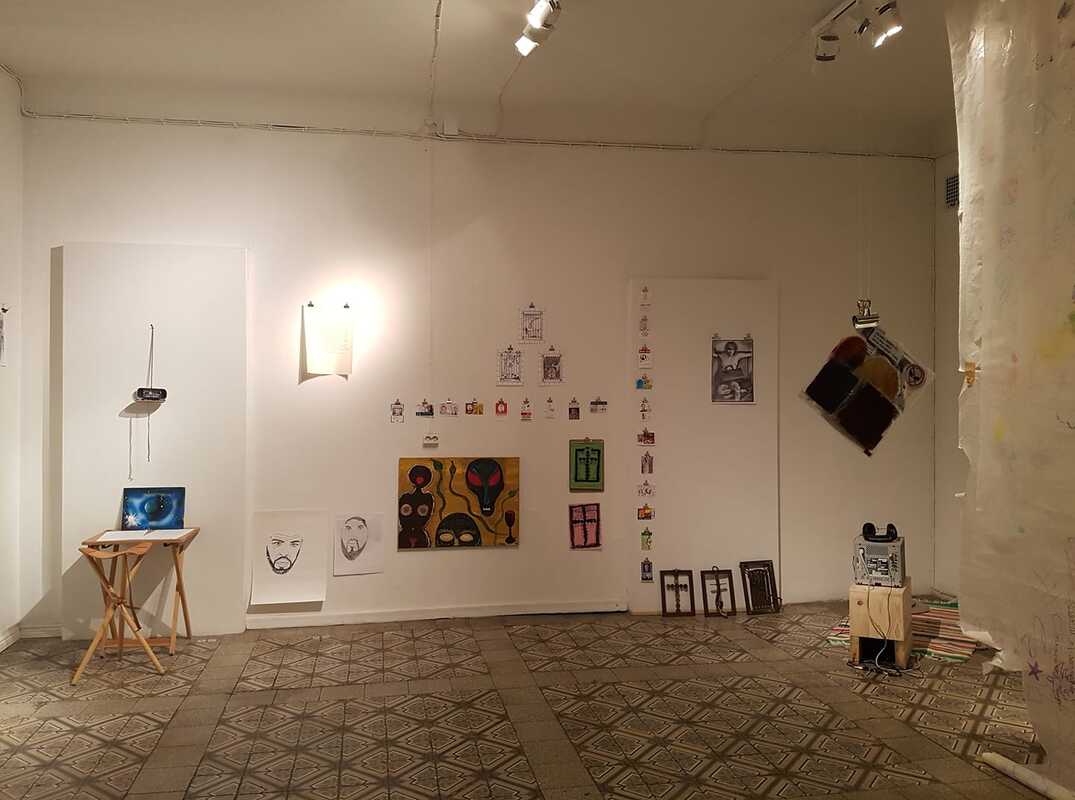
 RSS Feed
RSS Feed
